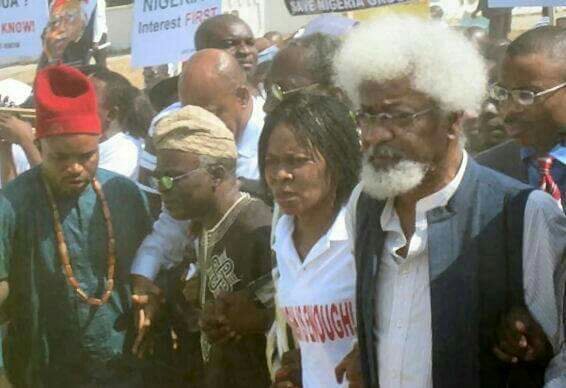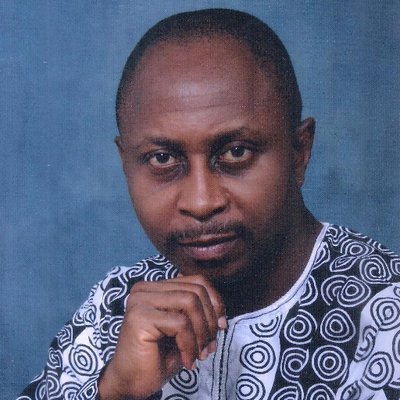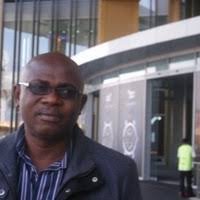By Dr. Charles Obiajulu Ugwu
“What if everything you believe about human decline is a lie, an ancient superstition masquerading as biology? What if aging, decay, and death are not fixed endpoints, but artifacts of a narrative we’ve inherited, repeated, and obeyed without question? Across the epochs, we’ve accepted a cycle as sacred journey spanning from birth, growth, stagnation, deterioration, and eventual demise as though it were coded into the stars. But what if that story was wrong, or worse, incomplete?
We are not standing at the end of possibility; we are standing at the threshold of a deeper design. A new kind of human that is adaptive, elastic, cosmogenic is beginning to emerge. This is not science fiction. This is the next evolutionary truth daring to be named.”
ABSTRACT
This article challenges the long-standing myth of biological fatalism that has defined human life cycles for millennia. It introduces the concept of the “Post-Limit Human,” a cosmogenic prototype designed to transcend the programmed decline encoded in our biological, psychological, and cultural systems. Drawing from cross-disciplinary insights including regenerative medicine, neuroplasticity, entropy theory, adaptive systems, and symbolic reframing, it presents a bold alternative to the current narrative of aging and mortality. This manifesto-in-motion is not a denial of entropy but a call to renegotiate its terms. It is a design blueprint for new models of human evolution that prioritize iterative regeneration, environmental coherence, and a recalibration of societal systems to meet the demands of a dynamically emerging world.
INTRODUCTION: THE TWILIGHT OF FATALISM
We are standing at the terminal edge of a story that no longer holds. For millennia, humanity has lived inside a tale we assumed was unchangeable: a linear arc beginning with birth, reaching a temporary crescendo in maturity, and tapering inevitably into decline, disease, and death. This life cycle has been repeated so often across cultures and generations that it now appears to us as nature’s own law.
Yet, on deeper scrutiny, this sequence is not sacred biology rather it is inherited mythology. The belief that we must age into deterioration, that our cognitive faculties must dull, and that our bodies must decay on schedule is not a law written into the fabric of the cosmos. It is a story we’ve been telling ourselves, reinforced through rituals, literature, religion, medicine, and even philosophy. And like all stories, it can be revised.
To question this narrative is not an act of heresy against nature. It is an act of fidelity to evolution. If the human body, mind, and ecosystem are open systems that are: responsive, adaptive, dynamic then they are also reprogrammable. They are not closed fates, but open platforms. This article introduces a new orientation, a departure from the mythology of inevitable decay and into the blueprint of the Post-Limit Human as a being no longer obedient to the arc of programmed finitude.
THE DEEP CODE OF DECLINE
The idea that humans must decay and die has been reinforced for so long that it feels like physical law. But it is worth asking: why does this assumption persist, and what sustains its authority?
From the burial tombs of ancient Egypt to the cycle-heavy mythologies of Norse and Hindu cosmologies, death and decline have been coded as inevitable steps in a cosmic order. Religious traditions have elevated death to a moment of sacred transition, while Western philosophical traditions from the Stoics to Heidegger have treated death as an essential component of meaning. Modern science, for all its rigor, did little to disrupt this trajectory. Instead, it replaced spiritual inevitability with biological programming: telomeres fray, free radicals accumulate, entropy conquers.
But while these biological mechanisms are observable, they are not fixed determinants. The Hayflick limit, which describes the finite number of times a human cell can divide, is not a divine ceiling but a default setting, one increasingly understood as modifiable through epigenetic and biochemical intervention. Telomerase therapy, senolytic drugs, and stem cell regeneration challenge the premise that our systems must degrade. Across species, we find regenerative anomalies such as hydra, planaria, and certain jellyfish who defy aging entirely. Nature, it seems, already offers hints that aging is not universal, but conditional.
What we call the “natural” cycle of decline may actually be the residue of an earlier evolutionary strategy considered useful in the wild but out of sync with the aspirations and capacities of contemporary human civilization.
HUMAN AS PLATFORM, NOT PRISON
Once we remove the veil of sanctity from the current human condition, a radical possibility emerges: what if the human body is not a temple to be preserved in reverence, but a platform to be redesigned in coherence with future conditions?
This is not transhumanism in its cold, techno-dystopian form, nor a Silicon Valley fantasy of uploading minds into clouds. It is something far more grounded: an understanding of human biology as a mutable architecture. Consider the immune system, capable of memory and learning. The brain, capable of forming new neural pathways even into late age. The skin, liver, and bones, all of which naturally regenerate to varying degrees. These features are not static but they are software-like, capable of iteration.
This leads to several core avenues for transformation:
Elastic Biology: We must explore regenerative medicine beyond replacement and toward recursion. Bioprinting, CRISPR, and pluripotent stem cell scaffolding can enable tissues and organs that don’t just substitute damaged parts but evolve with their environment.
NeuroInfinity: Contrary to the narrative that cognitive development peaks in early adulthood, emerging science shows lifelong neuroplasticity. With the right neurochemical environments, stimulation, and mental architectures, the brain can continue refining its complexity, abstraction, and integration indefinitely.
ChronoHacking: Our concept of time governs how we age. Biological time can be influenced, slowed, or restructured through circadian manipulation, hormesis, fasting, and cellular reprogramming. Time is not our master; it is an interface.
Code of Becoming: Psychological stasis is often a greater threat than physiological decay. The Post-Limit Human does not have a fixed identity but lives in narrative fluidity where it is able to re-script selfhood through intentional reframing, symbolic reimagination, and linguistic neurogenesis.
These capacities are not science fiction rather they are emerging realities. What remains is the cultural maturity to reframe them not as unnatural, but as the next necessary step in human evolution.
PARADOX AS PATHWAY
To move forward, we must dismantle the false binary between humility and ambition. The Post-Limit Human is not an attempt to deny death, but to exit the false logic that insists every moment of life must lean toward deterioration. The paradox is clear: the path to sustainability may lie not in conservation of our current capacities, but in their strategic reconfiguration.
We already know entropy is real. But entropy in physics is a measure of disorder, not doom. In adaptive systems, entropy is also a source of transformation. The human body already utilizes entropy to catalyze; repair, oxidation, inflammation, autophagy. The future of life is not one that resists entropy, but one that reengineers its relationship with it. We shift from erosion to expression.
The Post-Limit Human is thus not a machine that escapes death, but a being that metabolizes complexity and entropy into higher orders of coherence.
THE COSMOGENIC ARCHITECTURE
The word “cosmogenic” points us to a new conceptual frame: life as world-making. The Post-Limit Human is not simply a body extended; it is a world in evolution.
To live longer without corresponding shifts in meaning, purpose, and connection is a slow tragedy. Therefore, the blueprint must be systemic:
Environments must adapt to our biology, not oppose it. Smart habitats that respond to hormonal, psychological, and neurological rhythms will replace static architecture.
Governance systems must integrate bio-sensorial feedback with citizens as co-regulators of collective well-being, not subjects of outdated metrics.
Education will shift from front-loading information to real-time adaptive scaffolding across an extended lifetime.
Economies will reward regenerative contribution: not production that depletes, but creation that heals and multiplies.
This is the essence of cosmogenic design: a civilization that does not see the human as an isolated unit, but as an evolving node in a recursive ecological-intelligent system.
WHO NEEDS THIS NOW?
There is urgency. We live in a paradox where our tools evolve faster than our narratives. Every sector feels the tension:
Health systems are collapsing under the burden of chronic degeneration they were never built to prevent.
Education systems still teach for an industrial era despite cognitive science pointing to divergent learning pathways.
Governance models are aging faster than their populations, unable to adapt to real-time complexity.
And beneath it all, at a planetary level, the Earth itself is signaling that human life, as currently constructed, is unsustainable. The Post-Limit Human is not an indulgence; it is a survival imperative. To regenerate the Earth, we must regenerate the human.
FROM ARTIFACT TO ARCHETYPE
This article is not the final say. It is the first utterance of a new voice.
The Post-Limit Human is not a singular achievement. It is an archetype, a universal pattern seeded across disciplines, languages, and domains. Every artist who dreams of longevity in beauty, every scientist probing the boundaries of cellular function, every activist resisting the death-driven machinery of modernity, they are its early embodiments.
To act from this archetype is to step into a new grammar of life, one in which the question is no longer “how long can we sustain this version of humanity?” but “how can we evolve ourselves to meet what comes next?”
A BLUEPRINT, A BIRTH
This is a blueprint, but more than that, it is a birth cry. The Post-Limit Human is not waiting to emerge. It is already gestating in labs, art, policy, biology, cities, and dreams.
It calls on a new kind of leadership: cognitive architects, regenerative system builders, philosophical technologists, and cultural midwives.
We do not propose an escape from humanity. We propose its deepening. A version of the human no longer at war with time, no longer addicted to decline, no longer hostage to expired metaphors.
This is the beginning of something more coherent, more courageous, more cosmically aligned.
The question is no longer if this will happen.
The question is: Will we be conscious enough to shape it?
Author’s Note: This article forms part of a broader initiative aimed at birthing regenerative futures through cognitive reframing, system design, and symbolic ignition. For co-creation, or narrative collaboration, contact: the publisher
AUTHOR BIO
Dr. Charles Obiajulu Ugwu is a regenerative strategist, systems thinker, and thought leader in the future of adaptability and human evolution. With expertise in adaptive intelligence and post-expert leadership models, Dr. Ugwu crafts visionary frameworks for human potential beyond current limits. He is the principal designer of the Adaptability Quotient (AQ) framework and an active contributor to global dialogues on resilience, antifragility, and future-making.



























